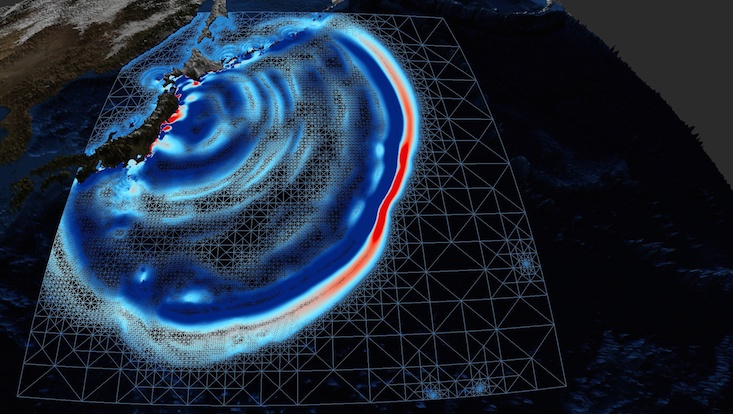The UGRID Reader ParaView Plugin
We developed a visualization component in collaboration with the "Numerical Methods in Geosciences" group.
The CF-conventions allow storing unstructured data defined at a series of points. However, it is often necessary to have additional information about the topology of the underlying unstructured mesh, i.e. is it a one dimensional network, a 2D triangular mesh or a flexible mixed triangle/quadrilateral mesh, a 2D mesh with vertical layers, or a fully unstructured 3D mesh. In this context, the UGRID reader plugin implements the UGRID conventions, a proposal by the UGRID Interoperability group for storing unstructured model data in NetCDF files. The UGRID Conventions extend the CF-conventions with topology specifications and are increasingly popular with an important subset of the CF community, so that they warrant the development of a customized reader.
For visualization purposes with ParaView, this translates into a customized plugin that enables the reading and rendering of UGRID meshes stored in the NetCDF file format. Currently, the UGRID Reader supports 2D unstructured triangular, quadrilateral and mixed triangle/quadrilateral meshes, while the data can be defined per cell or per vertex.
The UGRID Reader source code on github
View the UGRID playlist on YouTube (5 videos)

Tsunami simulation, Tohoku event 2011
Shown in the video: Tsunami simulation of the 2011 Tohoku event. This result uses a second-order Runge-Kutta discontinuous Galerkin method applied to the non-linear shallow water equations. The simulation has been carried out on an adaptively refined grid using the grid library amatos, the latter being an adaptive grid generator for solving geophysical problems. It allows to represent complex geometries, as well as strongly non-uniform refinement regions. The initial conditions are generated using Okada parameters provided by USGS (https://earthquake.usgs.gov/earthquakes/eventpage/official20110311054624120_30/finite-fault).
This work was carried out by Stefan Vater and Jörn Behrens within the ASCETE project (www.ascete.de) supported by the Volkswagen Foundation.
